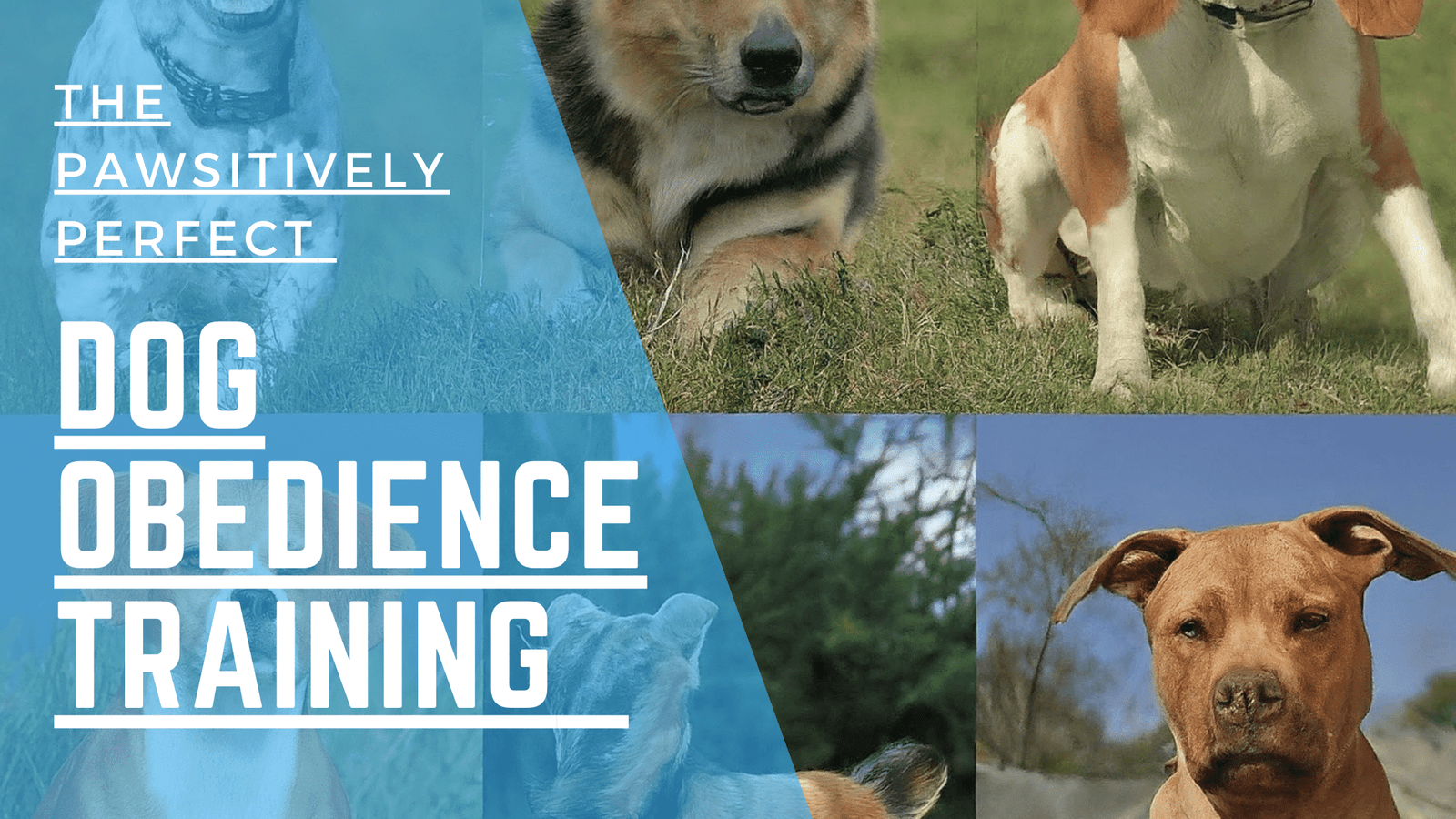Welcome to the Ultimate Guide to Dog Obedience Training!
This comprehensive module combines foundational principles with advanced techniques to provide you with a complete understanding of how to train and communicate effectively with your canine companion.
From basic commands to addressing complex behavioral issues, from selecting the right training tools to tailoring your approach to your dog’s breed, this guide covers everything you need to know to become an expert in dog obedience training.
Lesson 1: Introduction to Dog Obedience Training
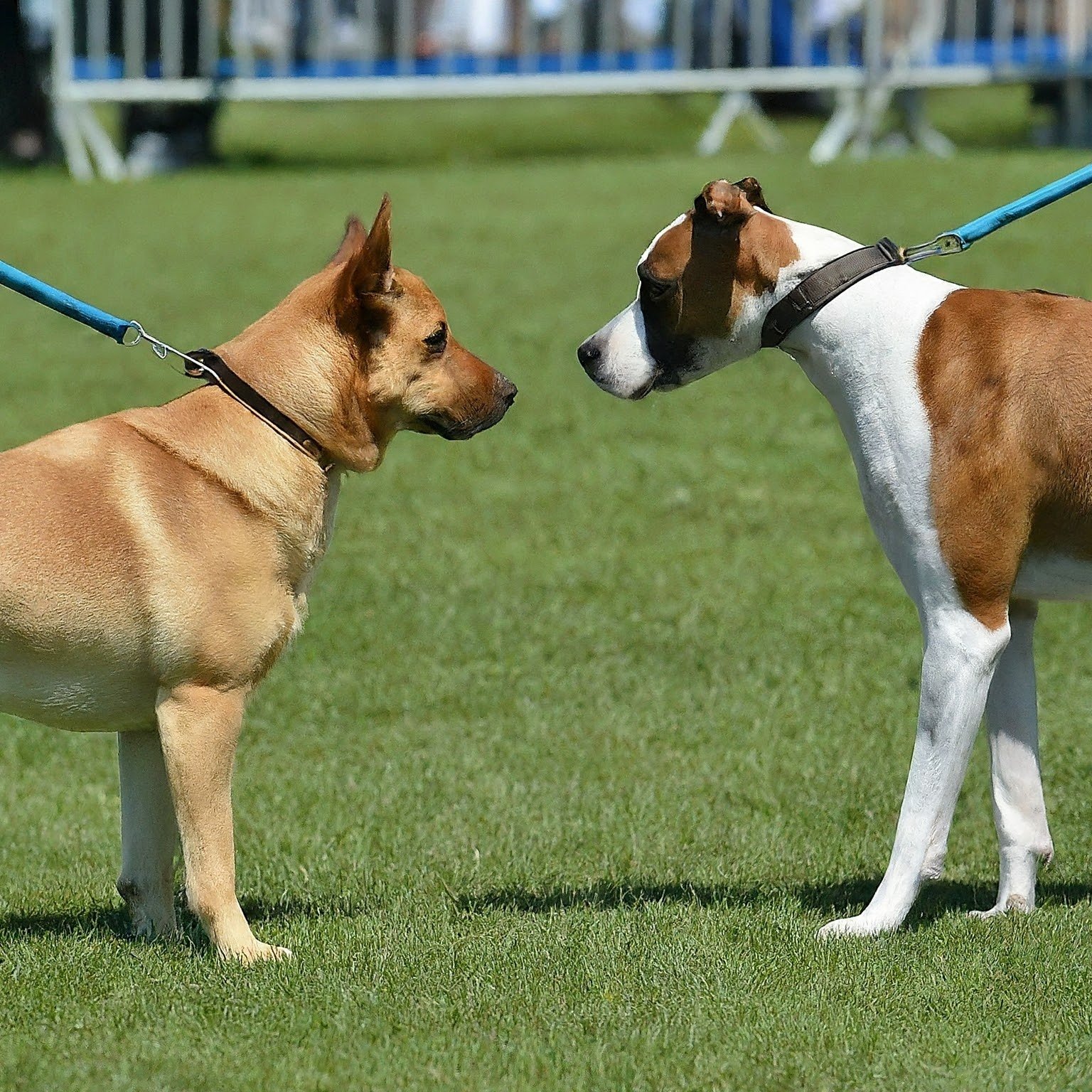
Welcome to Lesson 1 of the Ultimate Guide to Dog Obedience Training! In this lesson, we’ll delve into the fundamental aspects of obedience training and why it’s essential for building a strong relationship with your dog.
1. Why Obedience Training Matters:
Obedience training is not just about teaching your dog to follow commands; it’s about fostering a harmonious relationship built on mutual respect and understanding.
When your dog learns to respond to your commands reliably, it creates a sense of security and safety for both you and your pet.
Obedience training also enhances your dog’s quality of life by providing mental stimulation and opportunities for socialization.
Furthermore, a well-trained dog is more likely to be welcomed in public spaces and can enjoy more freedom and interaction with their environment.
2. Building Trust and Communication:
Obedience training is a powerful tool for strengthening the bond between you and your dog.
Through positive reinforcement techniques, you’ll establish trust and clear communication with your pet.
By consistently rewarding desired behaviors and gently correcting unwanted behaviors, you’ll create a language that your dog understands.
This mutual understanding fosters a deeper connection, allowing you to work together as a cohesive team.
3. Setting Realistic Expectations:
It’s important to approach obedience training with realistic expectations. Every dog is unique, and learning takes time and patience.
Understand that progress may be gradual, and setbacks are normal. Consistency, repetition, and positive reinforcement are key to success.
Set achievable goals and celebrate small victories along the way.
Remember, the journey of obedience training is as rewarding as the destination, so enjoy the process of learning and growing with your furry companion.
By recognizing the significance of obedience training, prioritizing trust and communication, and maintaining realistic expectations, you’ll lay the foundation for a successful training journey with your dog.
Stay tuned for the upcoming lessons, where we’ll dive deeper into specific training techniques and behaviors.
Lesson 2: Positive Reinforcement Training
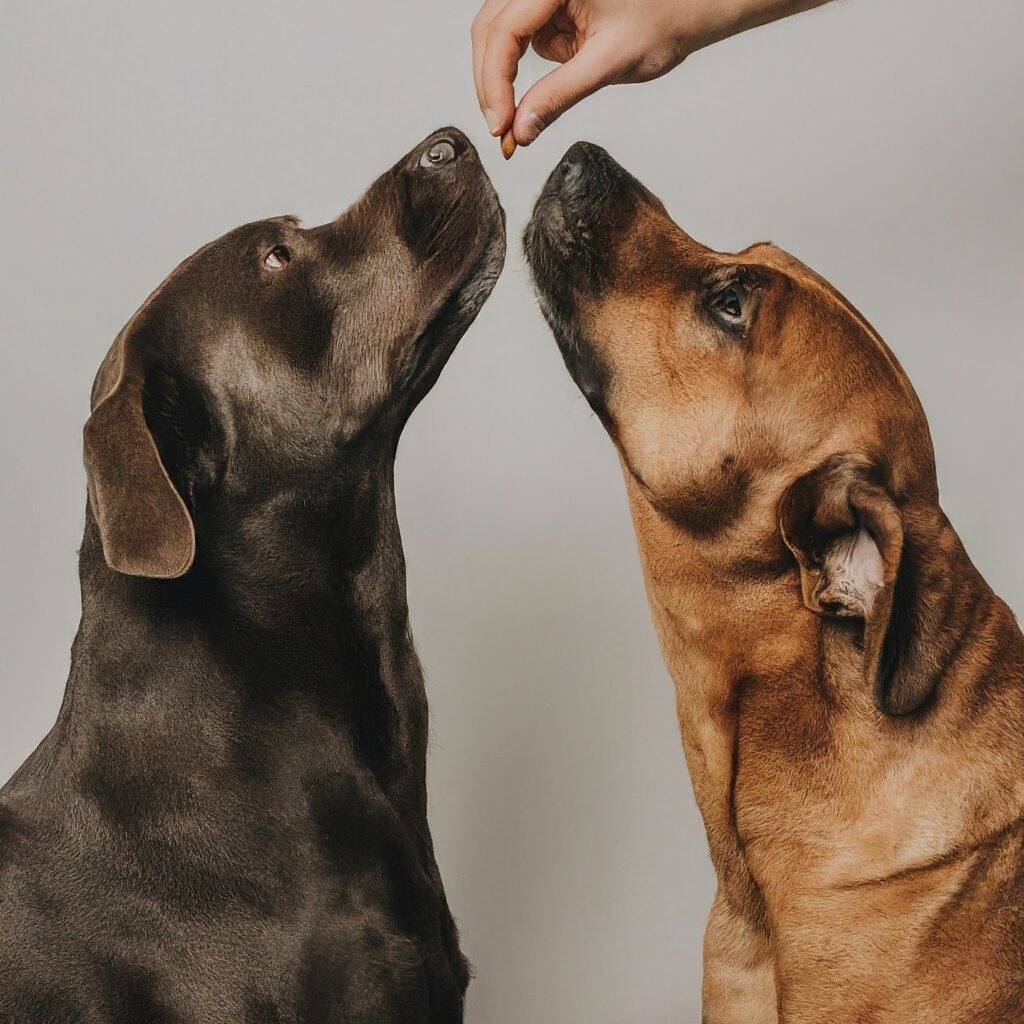
In this lesson, we’ll explore the powerful technique of positive reinforcement training and how it can transform your relationship with your dog.
1. The Power of Positive Reinforcement:
Positive reinforcement is a training method based on rewarding desired behaviors to encourage their repetition.
By rewarding your dog for good behavior with something they enjoy, such as treats, praise, or play, you’re reinforcing that behavior and increasing the likelihood of it occurring again in the future.
Positive reinforcement creates a positive association with training, making it enjoyable and rewarding for your dog.
It also strengthens the bond between you and your pet, as it fosters trust, respect, and cooperation.
2. Choosing the Right Rewards:
When it comes to positive reinforcement training, the rewards you choose play a crucial role in its effectiveness.
Rewards should be highly motivating to your dog and tailored to their preferences. For some dogs, treats like small pieces of chicken or cheese may be irresistible, while others may prefer toys or verbal praise.
Experiment with different rewards to determine what motivates your dog the most. Additionally, vary the rewards to keep training sessions exciting and engaging for your pet.
3. Timing and Consistency:
Timing and consistency are key principles of positive reinforcement training. Timing refers to the importance of delivering the reward immediately after your dog performs the desired behavior.
This allows your dog to associate the reward with the specific behavior you’re reinforcing, making the connection clear and reinforcing the behavior effectively.
Consistency involves consistently rewarding desired behaviors and avoiding rewarding unwanted behaviors.
It’s important to be consistent in your training approach to prevent confusion and ensure clarity for your dog.
By harnessing the power of positive reinforcement, choosing the right rewards, and maintaining impeccable timing and consistency in your training sessions, you’ll set the stage for success in teaching your dog new behaviors and strengthening your bond.
Stay tuned for the upcoming lessons, where we’ll delve deeper into specific obedience commands and advanced training techniques.
Lesson 3: Basic Obedience Commands

In this lesson, we’ll cover essential basic obedience commands that form the foundation of your dog’s training.
1. Sit:
The “sit” command is one of the first commands many dog owners teach their dogs.
It’s a versatile command that can be used in various situations, such as greeting visitors, waiting at doors, or during meal times.
To teach your dog to sit, hold a treat close to their nose and slowly move your hand upward.
As your dog’s head follows the treat, their bottom will naturally lower into a sitting position.
Once they’re sitting, praise and reward them with the treat. Repeat this process until your dog reliably sits on command.
2. Stay:
The “stay” command teaches your dog to remain in a specific position until released. Start by asking your dog to sit or lie down.
Then, with an open palm facing your dog, say “stay” in a firm but calm tone.
Step back a few paces, maintaining eye contact with your dog.
If your dog stays in place, return to them, praise them, and reward them with a treat.
Gradually increase the duration and distance of the stay as your dog becomes more proficient.
3. Come:
The “come” command, also known as recall, is crucial for your dog’s safety and your peace of mind.
Start in a low-distraction environment and call your dog’s name followed by the command “come.”
Use an enthusiastic tone of voice and encourage your dog to come to you.
When they reach you, praise them and offer a reward.
Practice the recall command frequently, gradually increasing distractions and distance as your dog becomes more reliable.
4. Heel:
The “heel” command teaches your dog to walk calmly and closely beside you without pulling on the leash.
Begin with your dog on your left side and hold a treat in your left hand.
With your dog’s leash in your right hand, start walking forward, encouraging your dog to stay beside you.
If your dog begins to pull ahead, gently redirect them back to your side with the treat. Reward your dog for walking calmly beside you, using verbal praise and treats.
5. Down:
The “down” command instructs your dog to lie down on their belly with their elbows touching the ground.
Start with your dog in a sitting position. Hold a treat in your hand and lower it to the ground in front of your dog’s nose.
Slowly move the treat forward and downward, encouraging your dog to follow it with their nose.
As your dog lowers their body to reach the treat, say “down” and praise them when they’re lying down.
6. Leave It:
The “leave it” command teaches your dog to ignore objects, people, or other animals on command.
Start by placing a treat in your closed hand and presenting it to your dog. When your dog shows interest in the closed hand, say “leave it” in a firm tone.
Wait for your dog to lose interest or look away from the hand, then praise and reward them with a different treat from your other hand.
7. Drop It:
The “drop it” command teaches your dog to release items from their mouth on command. Begin by offering your dog a toy or object to hold in their mouth.
Hold a treat near their nose to encourage them to drop the object.
As soon as they release it, say “drop it” and praise them. Reward them with the treat and retrieve the object.
8. Wait:
The “wait” command teaches your dog to pause or hold a position temporarily.
Use this command when you want your dog to pause before proceeding, such as at doorways, before crossing the street, or during meal times.
Start with your dog in a sit or stand position. Hold your hand up like a stop sign and say “wait” in a calm but firm tone.
Step forward, and if your dog stays in place, praise them and offer a reward.
Practice these basic obedience commands regularly in short, positive training sessions to reinforce your dog’s understanding and reliability.
Consistency, patience, and positive reinforcement are key to success. In the next lessons, we’ll explore advanced training techniques and behaviors to further enhance your dog’s obedience skills.
Lesson 4: Advanced Training Techniques
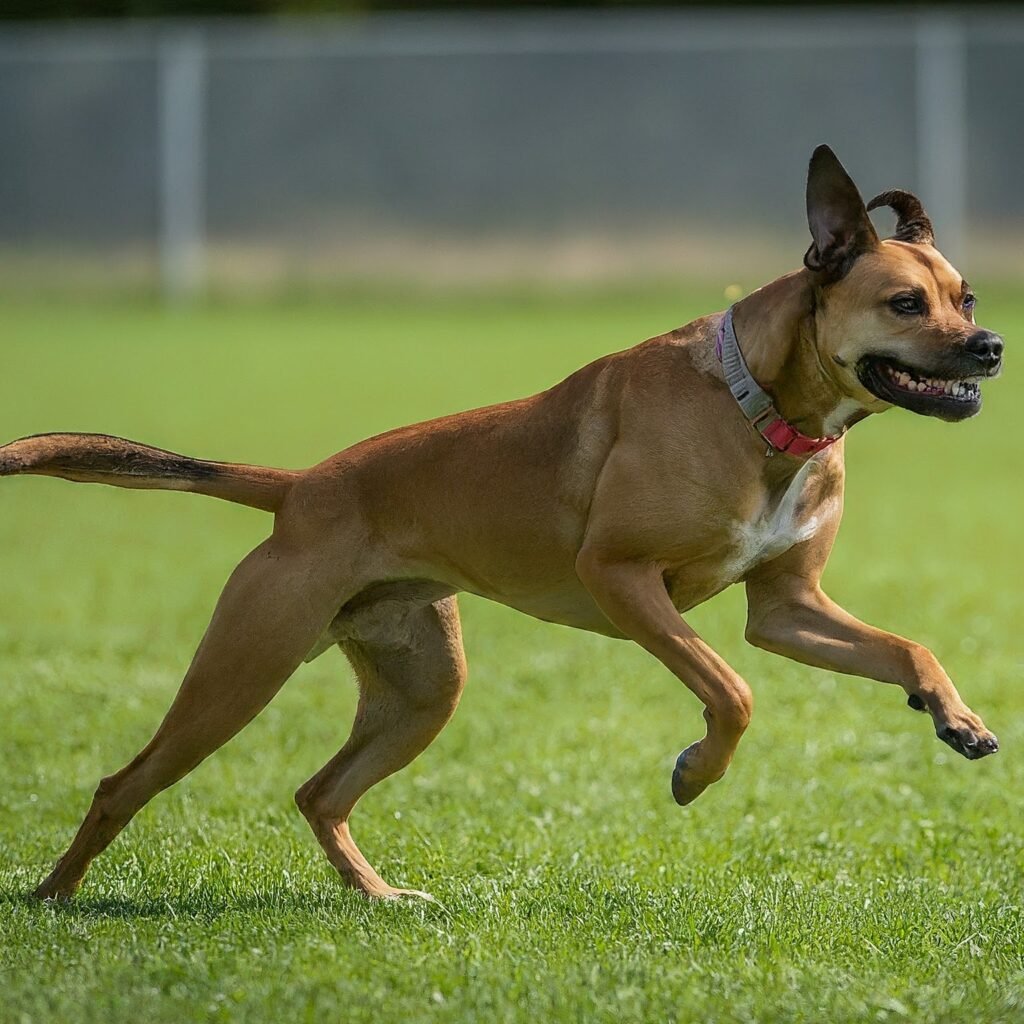
In this lesson, we’ll explore advanced training techniques that will challenge your dog mentally and physically, strengthening your bond and enhancing their obedience skills.
1. Agility Training:
Agility training involves guiding your dog through an obstacle course consisting of jumps, tunnels, weave poles, and other equipment.
Not only is agility training a fun and stimulating activity for your dog, but it also improves their coordination, strength, and confidence.
Start with basic agility equipment and gradually increase the complexity of the course as your dog becomes more proficient.
Use positive reinforcement techniques to encourage your dog and keep the training sessions enjoyable.
2. Scent Work:
Scent work, also known as nose work, taps into your dog’s natural scenting abilities by teaching them to locate specific odors.
This type of training can be used for various purposes, including search and rescue, detection work, and recreational activities.
Start by introducing your dog to a specific scent, such as a treat or essential oil, and encouraging them to find it using their nose.
Gradually increase the difficulty by hiding the scent in different locations and challenging environments.
Scent work provides mental stimulation and builds your dog’s confidence and focus.
3. Trick Training:
Trick training is a fun and creative way to engage with your dog and teach them new behaviors.
From basic tricks like “roll over” and “play dead” to more complex tricks like “fetch the newspaper” or “bow,” the possibilities are endless.
Break down each trick into small, manageable steps and use positive reinforcement techniques to reward your dog for their efforts.
Trick training builds your dog’s problem-solving skills, strengthens your bond, and provides mental stimulation.
4. Off-Leash Training:
Off-leash training allows your dog to enjoy freedom and explore their surroundings while still maintaining control and responsiveness to your commands.
Start by practicing off-leash training in a safe, enclosed area with minimal distractions.
Begin with basic obedience commands like “come,” “stay,” and “heel,” gradually increasing the distance and duration off-leash.
Use high-value rewards and positive reinforcement to reinforce desired behaviors and encourage your dog to stay focused on you.
Off-leash training requires trust, consistency, and a strong recall command to ensure your dog’s safety and reliability.
Incorporate these advanced training techniques into your dog’s routine to keep them mentally stimulated, physically active, and obedient.
Remember to keep training sessions fun and rewarding for your dog, and always prioritize their safety and well-being.
In the next lessons, we’ll explore problem-solving and troubleshooting techniques for addressing common behavioral issues.
Lesson 5: Problem-Solving and Troubleshooting
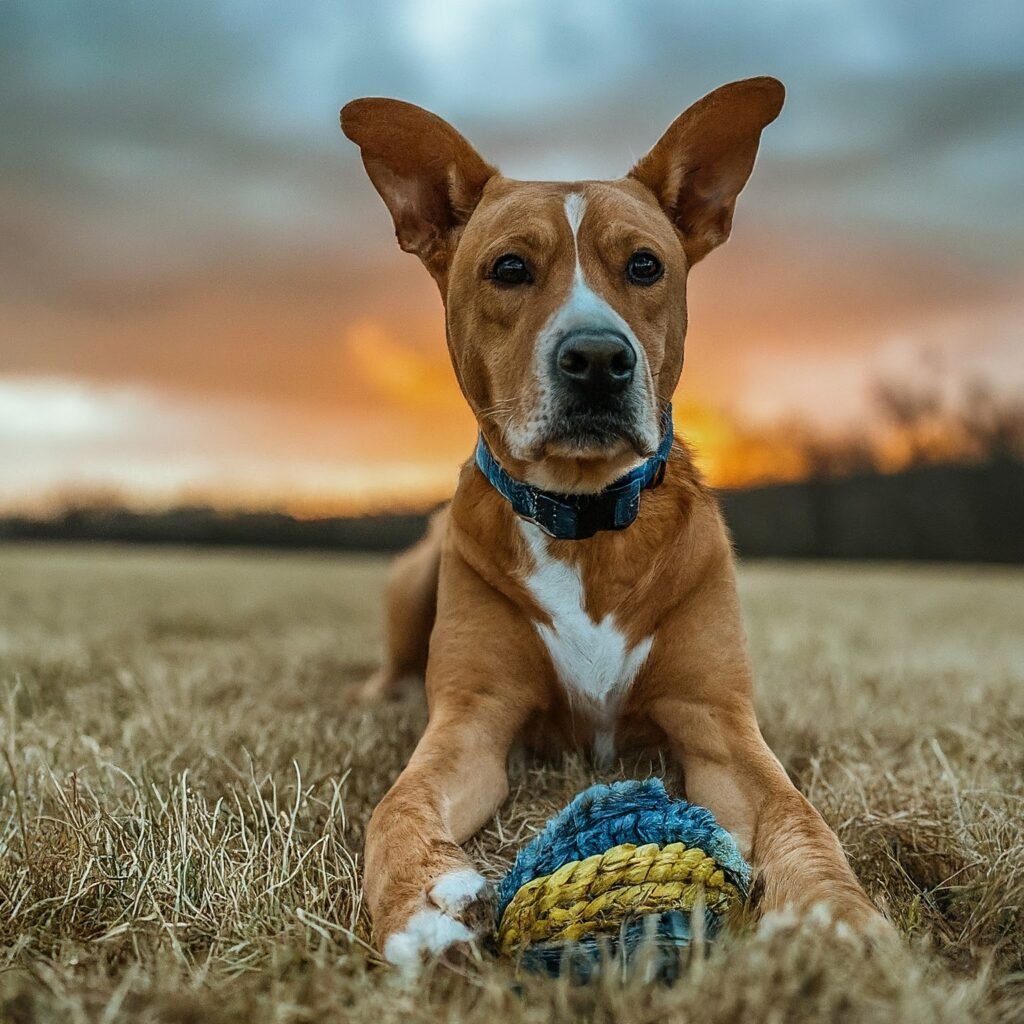
In this lesson, we’ll explore common behavioral issues that many dog owners face and discuss effective strategies for addressing them.
1. Addressing Leash Pulling:
Leash pulling can make walks stressful and unpleasant for both you and your dog.
To address leash pulling, start by teaching your dog loose leash walking techniques using positive reinforcement.
Encourage your dog to walk beside you with a loose leash, rewarding them for walking calmly without pulling.
Use techniques such as stopping and changing direction when your dog pulls to redirect their focus back to you.
2. Dealing with Jumping:
Jumping up on people is a common behavior problem in dogs, especially when greeting visitors.
To discourage jumping, teach your dog an alternative behavior, such as sitting or standing calmly, when greeting people.
Ignore jumping behaviors and only reward your dog when they greet people politely.
Consistency and positive reinforcement are key to effectively addressing jumping behavior.
3. Managing Barking:
Excessive barking can be a nuisance and may indicate underlying issues such as boredom, anxiety, or territorial behavior.
Identify the triggers for your dog’s barking and address them accordingly.
Provide mental and physical stimulation through activities like puzzle toys, interactive games, and regular exercise.
Use positive reinforcement to reward quiet behavior and teach your dog a “quiet” command.
4. Overcoming Fear and Anxiety:
Fear and anxiety can manifest in various ways in dogs, including trembling, hiding, excessive barking, or aggression.
Identify the source of your dog’s fear or anxiety and gradually expose them to it in a controlled and positive manner.
Use counterconditioning and desensitization techniques to change your dog’s emotional response to the trigger.
Provide a safe and secure environment for your dog and seek professional help if needed.
5. Dealing with Aggression:
Aggression in dogs can be dangerous and requires careful management and intervention.
Identify the triggers for your dog’s aggressive behavior and avoid exposing them to situations that provoke aggression.
Work with a qualified professional, such as a certified dog trainer or behaviorist, to develop a behavior modification plan tailored to your dog’s specific needs.
Use positive reinforcement techniques to teach your dog alternative, incompatible behaviors and reinforce calm, non-aggressive behavior.
6. Managing Separation Anxiety:
Separation anxiety is a common problem in dogs and can manifest in destructive behavior, excessive vocalization, and house soiling when left alone.
Create a predictable routine for your dog and gradually accustom them to being alone through short absences.
Provide enrichment activities, such as puzzle toys and interactive games, to keep your dog mentally stimulated when alone.
Use desensitization and counterconditioning techniques to help your dog associate being alone with positive experiences.
7. Addressing Resource Guarding:
Resource guarding occurs when a dog exhibits aggressive behavior to protect their possessions, such as food, toys, or sleeping areas.
To address resource guarding, teach your dog to willingly exchange items by trading them for high-value treats.
Avoid triggering resource guarding behavior by respecting your dog’s space and possessions.
Work with a professional trainer to implement a behavior modification plan and ensure the safety of everyone involved.
By implementing these strategies and techniques, you can effectively address common behavioral issues and strengthen your bond with your dog.
Remember to be patient, consistent, and compassionate in your approach, and seek professional help if needed.
In the next lessons, we’ll explore training tools and equipment, breed-specific considerations, and training in different environments.
Lesson 6: Training Tools and Equipment
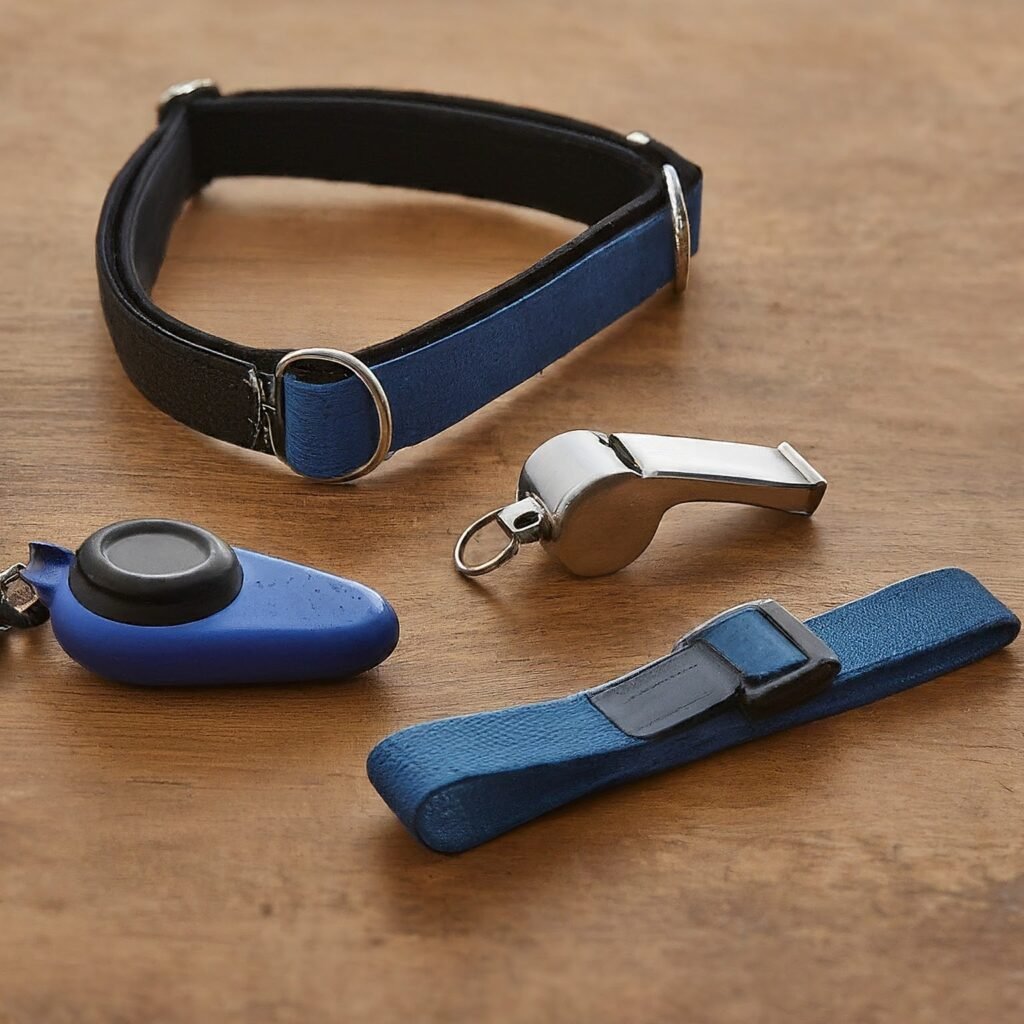
In this lesson, we’ll explore various tools and equipment that can enhance your training sessions and help you effectively communicate with your dog.
1. Clicker Training:
Clicker training is a popular and effective method of positive reinforcement training.
A clicker is a small handheld device that makes a distinct clicking sound when pressed.
The clicker serves as a marker to signal to your dog that they have performed a desired behavior correctly.
Pair the sound of the clicker with a treat or reward to reinforce the behavior.
Clicker training allows for precise timing and clear communication, making it an excellent tool for teaching new behaviors and shaping complex behaviors.
2. Treat Pouches and Reinforcers:
Treat pouches are convenient containers that allow you to carry treats during training sessions.
A treat pouch keeps your hands free and makes it easy to access treats quickly when rewarding your dog.
Choose a treat pouch with multiple compartments to store different types of treats and keep them fresh.
Experiment with a variety of treats to determine what motivates your dog the most, whether it’s small pieces of meat, cheese, or commercial dog treats.
3. Harnesses and Collars:
Harnesses and collars are essential tools for controlling and guiding your dog during training sessions and walks.
Choose a harness or collar that fits your dog comfortably and securely without restricting their movement.
Harnesses are ideal for dogs that tend to pull on the leash, as they distribute pressure more evenly across the body and reduce the risk of injury.
Collars, such as flat collars or martingale collars, are suitable for dogs that walk politely on leash and require minimal control.
4. Training Aids: Whistles, Target Sticks, etc.:
Training aids such as whistles, target sticks, and other tools can be valuable additions to your training toolkit.
Whistles can be used to provide clear and consistent signals to your dog from a distance, making them ideal for off-leash training and recall exercises.
Target sticks are used to guide your dog’s movements and teach them to touch or follow a specific target.
Other training aids, such as agility equipment or interactive toys, can provide additional mental and physical stimulation for your dog during training sessions.
When using training tools and equipment, remember to prioritize your dog’s comfort, safety, and well-being.
Choose tools that align with your training goals and methods, and always introduce new equipment gradually to prevent overwhelming your dog.
With the right tools and techniques, you can enhance your training sessions and strengthen the bond between you and your canine companion.
In the next lesson, we’ll explore breed-specific training considerations and techniques to tailor your training approach to your dog’s individual characteristics and needs.
Lesson 7: Breed-Specific Training Considerations
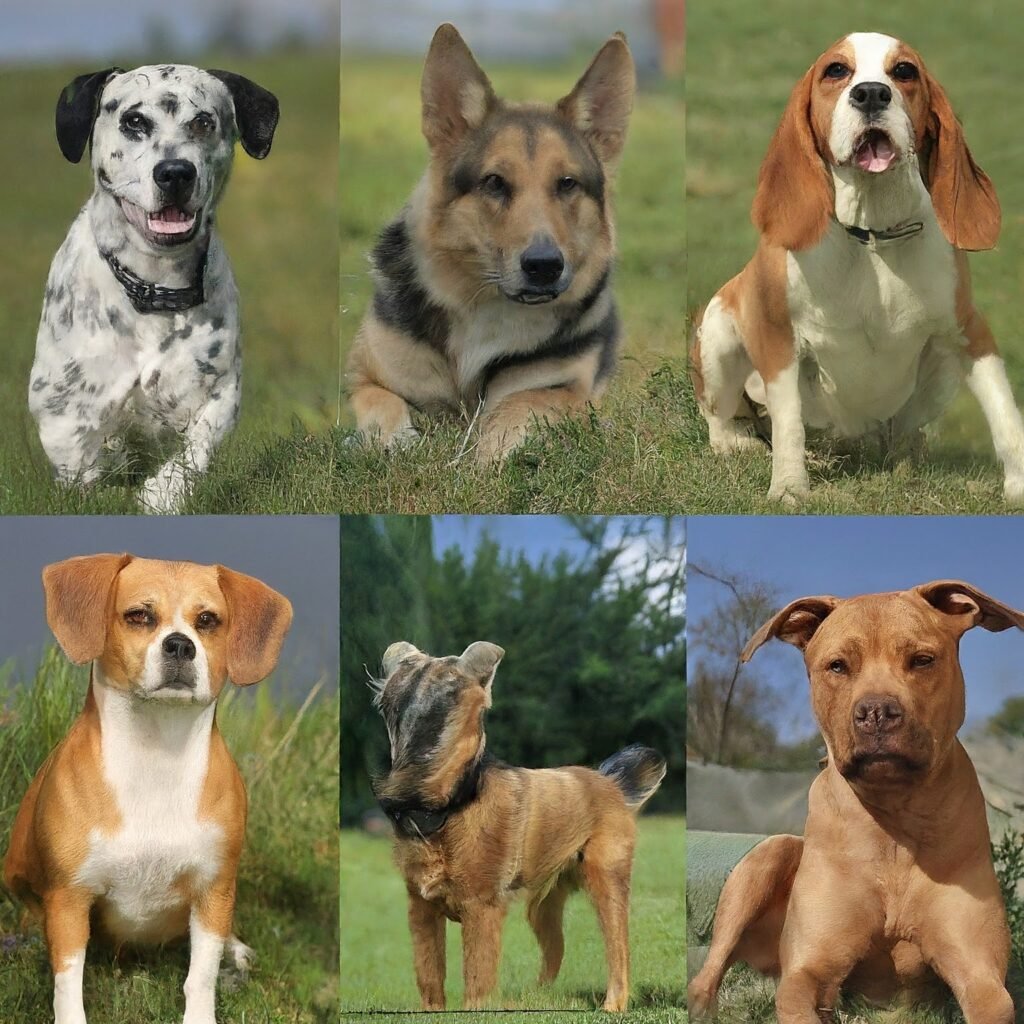
In this lesson, we’ll explore how different breeds have unique characteristics and instincts that influence their training needs.
By understanding your dog’s breed-specific traits, you can tailor your training approach to maximize success and strengthen your bond with your canine companion.
1. Herding Breeds: Channeling Instinctual Behaviors
Herding breeds, such as Border Collies, Australian Shepherds, and German Shepherds, have strong instincts to control the movement of animals.
When training herding breeds, it’s essential to provide opportunities for them to engage in activities that simulate their natural herding behaviors.
Consider enrolling your dog in herding classes or participating in dog sports like agility or flyball, which allow them to use their natural instincts in a controlled environment.
Channel their energy and intelligence into constructive activities, and be mindful of their herding tendencies during training sessions.
2. Working Breeds: Providing Mental Stimulation
Working breeds, such as Labrador Retrievers, Boxers, and Doberman Pinschers, were bred to perform specific tasks, such as retrieving, guarding, or pulling.
These breeds thrive on mental stimulation and enjoy having a job to do.
Incorporate training exercises that challenge their problem-solving skills and engage their minds.
Teach them new tricks, play interactive games, or introduce them to scent work or tracking activities to keep their minds sharp and satisfied.
Consistent mental stimulation will help prevent boredom and destructive behaviors in working breeds.
3. Toy Breeds: Tailoring Training to Size and Energy Levels
Toy breeds, such as Chihuahuas, Pomeranians, and Yorkshire Terriers, have unique training needs due to their small size and energy levels.
When training toy breeds, use gentle, positive reinforcement techniques and avoid overwhelming them with intense or demanding exercises.
Break training sessions into short, manageable segments to accommodate their shorter attention spans.
Choose training activities that are suitable for their size and physical capabilities, such as agility courses with lower obstacles or obedience exercises in a safe, enclosed space.
4. Sporting Breeds: Incorporating Physical Exercise into Training
Sporting breeds, such as Golden Retrievers, Pointers, and Spaniels, were bred for hunting and retrieving game.
These breeds have high energy levels and require plenty of physical exercise to stay happy and healthy.
Incorporate physical exercise into your training sessions by incorporating activities like running, hiking, or playing fetch.
Provide opportunities for your dog to engage in activities that allow them to use their natural hunting instincts, such as scent work or retrieving games.
Regular exercise will help burn off excess energy and keep sporting breeds mentally stimulated and well-balanced.
By understanding and accommodating your dog’s breed-specific traits and instincts, you can tailor your training approach to meet their individual needs and set them up for success.
Remember to be patient, consistent, and compassionate in your training efforts, and always prioritize your dog’s well-being and enjoyment.
In the next lesson, we’ll explore how to generalize obedience commands to different environments and distractions for real-world reliability.
Lesson 8: Training in Different Environments
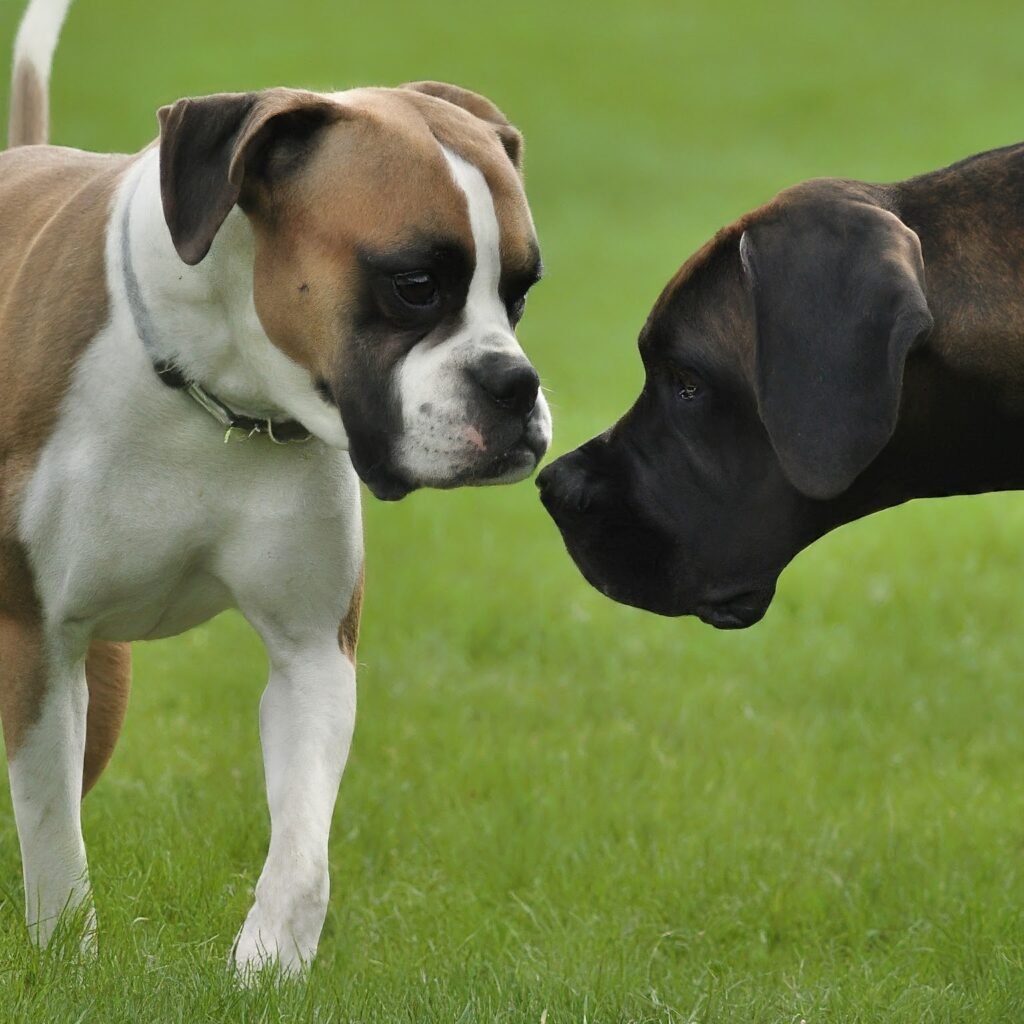
In this lesson, we’ll explore how to generalize obedience commands to different environments and distractions for real-world reliability.
1. Generalization Techniques:
Generalization is the process of teaching your dog to respond to commands in various environments and situations.
Start by practicing obedience commands in a familiar and controlled environment, such as your home or backyard.
Once your dog understands the commands in this setting, gradually introduce new environments with increasing levels of distraction, such as parks, streets, or busy areas.
Use consistent cues and rewards to reinforce desired behaviors and help your dog generalize commands across different contexts.
2. Training in Public Spaces:
Training your dog in public spaces is essential for ensuring that they can respond reliably to commands in real-world situations.
Start by choosing quiet, low-distraction areas, such as empty parks or quiet streets, to practice obedience commands.
Gradually increase the level of distraction by exposing your dog to more challenging environments, such as crowded parks or busy city streets.
Use positive reinforcement and rewards to keep your dog focused and motivated, and be patient as they adjust to new surroundings.
3. Distraction Training:
Distraction training involves teaching your dog to maintain focus and respond to commands despite the presence of distractions.
Start by introducing mild distractions, such as toys or food, during training sessions at home.
As your dog becomes more proficient, gradually increase the level of distraction by introducing more challenging stimuli, such as other dogs, people, or noises.
Use high-value rewards and positive reinforcement to encourage your dog to stay focused on you and respond to commands reliably, even in distracting environments.
4. Incorporating Real-Life Scenarios:
Incorporating real-life scenarios into your training sessions helps prepare your dog for everyday situations they may encounter.
Practice obedience commands during daily activities, such as walks, visits to the park, or outings to pet-friendly stores.
Use these opportunities to reinforce desired behaviors and address any challenges or issues that arise.
By integrating training into your daily routine, you’ll help your dog develop good manners and obedience skills that translate into real-life situations.
By utilizing generalization techniques, training in public spaces, practicing distraction training, and incorporating real-life scenarios into your training sessions, you’ll help your dog become more reliable and obedient in various environments.
Remember to be patient, consistent, and positive in your training approach, and celebrate your dog’s progress along the way.
With dedication and perseverance, you’ll set your dog up for success in any situation they encounter.
Congratulations on completing the Ultimate Guide to Dog Obedience Training!
